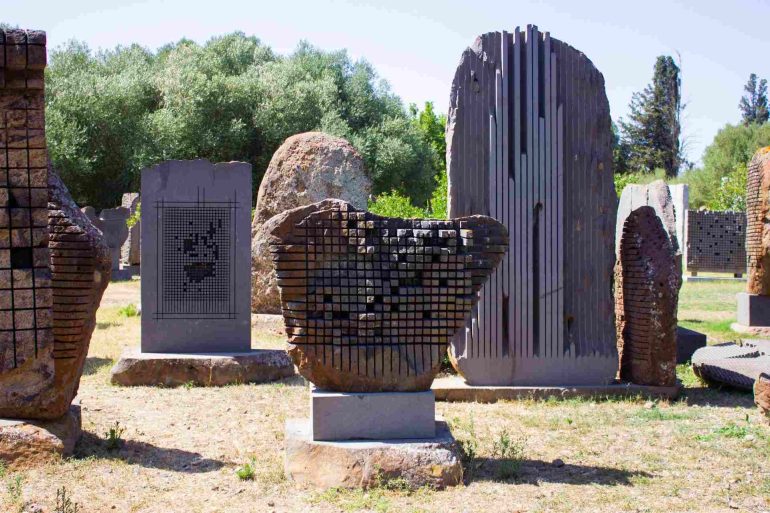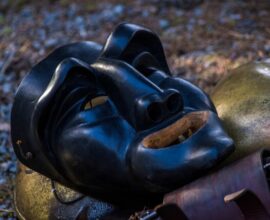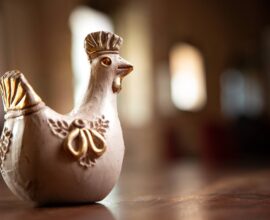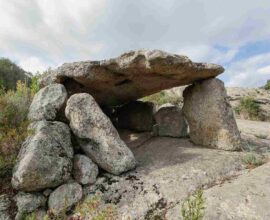The voice of the stones: Pinuccio Sciola’s magical Sound Garden
Pinuccio Sciola’s Giardino Sonoro: the timeless charm of a place rich in art and culture
A few kilometres from Cagliari there is an artistic space surrounded by greenery, a magical oasis where the “stones sing”.
Not far from Cagliari, the village of San Sperate is home to a unique place that will enchant you with “the voice of the stones”. This can be listened to in Pinuccio Sciola’s sound garden. The artist has transformed his native village into an open-air laboratory for his artistic work since the sixties.
The innovative idea of sound sculptures then came in 1996 with the first exhibition open to the public “Jazz Stone”, staged in Berchidda, near Sassari: a success thanks to which his revolutionary works thus began to be the undisputed protagonists of events all over the world, used as real “musical instruments” in numerous concerts.
But how did Sciola manage to get sounds from the rocks? He used the local stones treated with the engraving of some lines. The appearance is that of the prehistoric megaliths found in Sardinia, a tribute to its land.
At the beginning of the twentieth century, the decision was made to make the workshop a perennial exhibition space where sound sculptures could be collected, all together in one place: thus was born the Sound Garden, the first public art park on the island, where visitors had the opportunity to get closer to the works and, after becoming familiar, reproduce their own music thanks to “stone instruments”.
A place surrounded by greenery, where limestone and basalt give life to evocative archaic sounds, which today is looked after by Pinuccio’s daughter, Maria, who, taking up her father’s legacy, allows everyone to enjoy, in a new dimension, Nature and Art.
The incredible works of the Sound Garden
First, when entering this magical place we encounter “Opera Prima”(first work), also called “Pietrino”, the first work created by Sciola at the end of the fifties, a boy sculpted in sandstone.
Continuing along the path, here comes “Homage to Piet Mondrian”, the Dutch artist known for his canvases with geometric figures painted with homogeneous backgrounds of primary colours: Sciola reproduces one of his paintings with essential and clear engravings on the stone.
Among Sciola’s first sound sculptures, “Jazz Stone” cannot be missed, exhibited and played during the Berchidda event in 1996: it is characterised by all-round workmanship, with precise cuts of different lengths that contrast with the surface of the basalt left raw.
Another one of Pinuccio’s great artistic achievements is “I Semi” (the seeds) where the stone almost seems to hatch into a sprout. It is a majestic block of basalt in which a clear and perfect vertical incision emerges in a compact and warm grey that contrasts with the raw stone that is being tinted by nature’s colours.
Then we find “Cielo di Pietra” (Stone Sky), a work that was made before the artist started producing sound sculptures. Its rhomboidal shape is furrowed by precise cuts that almost look like ropes tied to hold the monolith. The “sail”, a tribute to Sardinia’s sea, is made of three blocks of stone juxtaposed by opaque and clear white, and the “Pietra elastica” (Elastic stone), capable of vibrating with such overwhelming force as to be moving an unrepeatable and irreproducible work.
The Sound Garden and more than an hour from Cagliari
This breathtaking gem such as the Sound Garden stands about sixty kilometres from the capital, one of many attractions in the area.
An hour from Cagliari, there are also the Necropolis of Montessu, where you can see dozens of Domus de Janas, the Conti Vecchi Salt Pans, the oldest on the island where man and nature have been working side by side for years, the Caves of Is Zuddas, on the relief of Mount Meana.
And then, in the heart of the Archaeological Park of Pula, the bewitching spectacle of Nora, the first Phoenician city in Sardinia, dating back to the eighth century.
These are all wonders that know how to enchant and that are easily reachable from Forte Village, the award-winning affordable luxury resort set in the spectacular setting of Santa Margherita di Pula, the perfect destination to spend a holiday of comfort, well-being, sport, privacy and relaxation: there is no shortage of shopping opportunities, gourmet restaurants, Wellness oasis and activities for the little ones.
Would you like to visit the Sound Garden and experience an unforgettable holiday in an authentic paradise? Discover Forte Village in Sardinia






